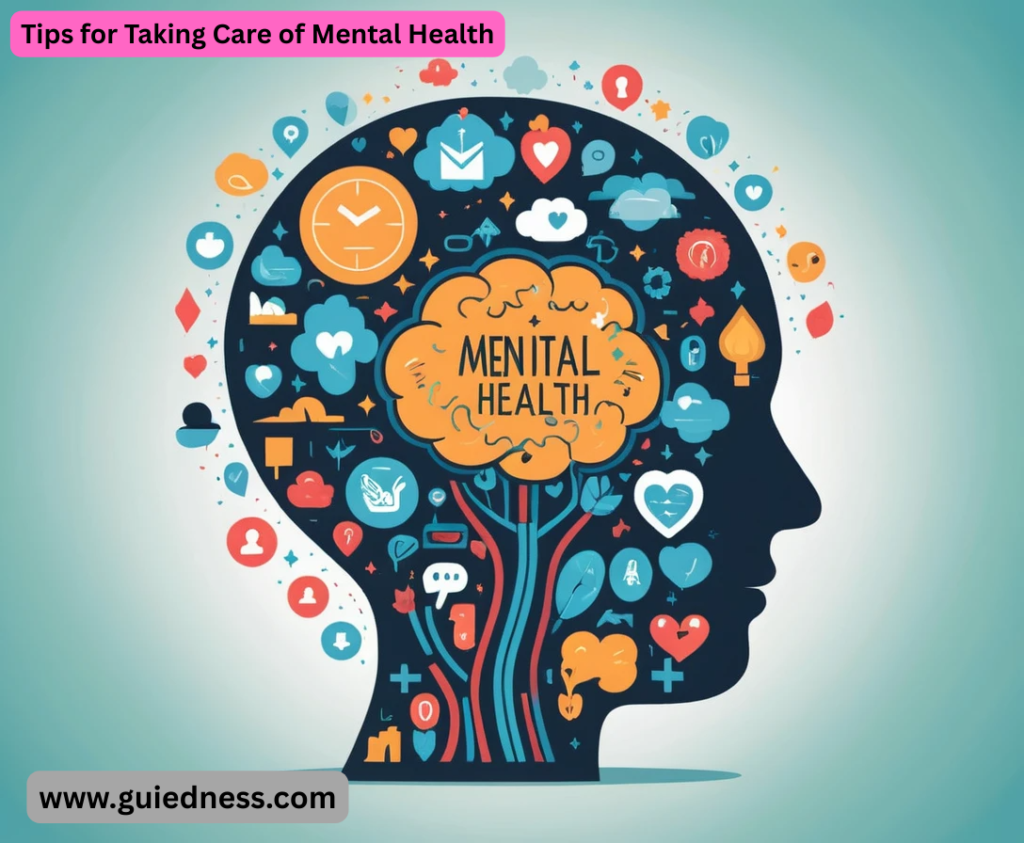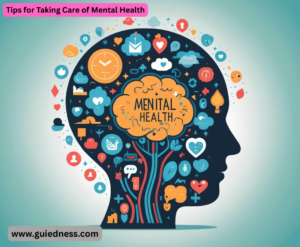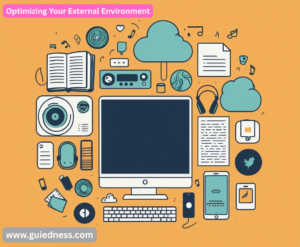Tips for Taking Care of Mental Health Here are comprehensive, actionable tips categorized to help you build a sustainable mental health care routine.
The Fundamentals: Nurturing Your Body and Mind
- Think of these as the non-negotiable basics. When these are off, everything else feels harder.
- Establish a relaxing bedtime routine (e.g., reading, taking a warm bath) and avoid screens an hour before bed.
- Move Your Body: Exercise isn’t just for physical health. It releases endorphins (natural mood lifters) and reduces stress hormones. You don’t need to run a marathon—a daily 20-minute walk, dance in your living room, or stretching can make a huge difference.
- Get Sunlight: Exposure to natural light, especially in the morning, helps regulate your circadian rhythm and boosts serotonin levels, which can improve mood and focus.
Building Healthy Mental Habits
- These are the skills and practices that build resilience over time.
- Practice Mindfulness and Meditation: This means focusing on the present moment without judgment. It can reduce anxiety and rumination. Start with just 5 minutes a day using an app like Calm, Headspace, or Healthy Minds Program.
- Challenge Negative Thoughts: Learn to identify negative thought patterns (e.g., “I always mess things up”). Ask yourself: “Is this thought true? What is the
evidence for and against it?
Set Healthy Boundaries: It’s okay to say “no” to things that drain your energy or overwhelm you. Protect your time and emotional space. This is an act of self-respect, not selfishness.
- Practice Self-Compassion: Talk to yourself like you would talk to a good friend. It’s okay to not be okay.
- Limit Doomscrolling and Social Media: Be mindful of your media consumption. Constant exposure to negative news or curated “perfect” lives on social
- media can significantly worsen anxiety and feelings of inadequacy. Set time limits.
Cultivating Connection
- We are social creatures. Connection is a powerful antidote to stress and loneliness.
- Nurture Your Relationships: Make time for people who make you feel supported, heard, and valued. A short text, a phone call, or a coffee date can be
incredibly nourishing.
- . Talk to a friend, family member, or partner about what you’re going through. Often, just voicing your feelings can make them feel more manageable.
- Find Your Community: Connect with people who share your interests or values, whether it’s a book club, a sports team, a volunteer group, or an online community.
Finding Joy and Purpose
- Mental health isn’t just about reducing the bad; it’s about increasing the good.
- Make Time for Hobbies: Engage in activities you enjoy purely for the sake of enjoyment, not productivity.
- Learn Something New: Stimulate your brain and build confidence by picking up a new skill. This could be learning a language, an instrument, or a DIY project.
- Practice Gratitude: Regularly noting things you are thankful for can shift your perspective. Try writing down three good things that happened at the end
of each day in a journal.
- Tips for Taking Care of Mental Health Help Others: Volunteering or performing small acts of kindness can boost your mood and provide a sense of purpose and connection.
When to Seek Professional Help
- These tips are excellent for maintenance, but sometimes we need more specialized support. S Consider it if:
- Your symptoms (sadness, anxiety, worry) are persistent and interfering with your daily life (work, relationships, self-care).
You are relying on substances (alcohol, drugs) to cope.
- You have thoughts of harming yourself or others.
Professionals who can help:
- Therapist/Psychologist: Provides talk therapy (e.g., CBT, DBT) to develop coping strategies.
- Psychiatrist: A medical doctor who can diagnose mental health conditions and prescribe medication.
- Counselor or Social Worker: Provides support and counseling.
Crisis Resources (Available 24/7):
- Crisis Text Line: Text HOME to 741741.
- The Trevor Project: 1-866-488-7386 (for LGBTQ youth).
Mastering Your Internal Environment
This is about shifting your relationship with your own thoughts and feelings.
- Name It to Tame It: When you feel a wave of a difficult emotion, don’t just react. Pause and literally label it. Say to yourself, “This is anxiety,” or “This is feeling overwhelmed.” This simple act engages the prefrontal cortex (the rational part of your brain) and dials down the amygdala (the fear center),
making the emotion feel less all-consuming.
- . Radical acceptance means acknowledging reality as it is in this moment, even if it’s painful, without judging it or immediately trying to change it. It’s not about approval; it’s about stopping the struggle against the unchangeable to free up energy to cope effectively.
- Schedule a “Worry Time”: If you’re a chronic worrier, contain it. Write down all your anxieties. When worries pop up at other times, gently remind yourself, “I will address this during my worry time.” This contains rumination and prevents it from taking over your entire day.
- Embrace “Both/And” Thinking: Challenge “either/or” thoughts. You can be both anxious about a presentation and confident in your abilities. This creates psychological flexibility and reduces the pressure to feel only one way.
Optimizing Your External Environment
- Audit your social media feeds. Unfollow accounts that make you feel insecure, inadequate, or angry. Mute negative group chats. Choose podcasts,
- music, and news sources that inform and uplift rather than enrage and depress.
- Create a “Mental Health First Aid” Kit: Prepare a physical or digital box for bad mental health days. Fill it with things that comfort you: a favorite playlist, a letter to yourself, a comforting movie, a list of people to call, a soothing scent, a funny video playlist.
- Tidy Your Space (The Gentle Way): Clutter can contribute to subconscious stress. You don’t need a full-scale KonMari clean. Start with one surface—your
desk, your nightstand.
- It’s not about hiking for exercise; it’s about slowly walking and consciously engaging all five senses. Studies show it can significantly reduce stress
hormones. A city park can work too!
Deepening Connection and Purpose
- Tips for Taking Care of Mental Health Engage in “Quality Time” Alone: Solitude is different from loneliness. Schedule time for yourself to do something deeply replenishing without any goal. This could be sitting with a coffee and just people-watching, wandering through a museum, or sitting in silence.
- Reevaluate Your Relationship with Productivity: Challenge the notion that your worth is tied to your output. Practice doing something inefficiently for the joy of it. Allow yourself to have an unproductive afternoon without guilt. Rest is a right, not a reward.
- Find Awe: Actively seek out experiences that give you a sense of awe—the feeling of being in the presence of something vast that transcends your current understanding of the world. This can put your problems into perspective. Look at the stars, watch a powerful documentary, stand next to a large
body of water, listen to a symphony.
- Practice Digital Minimalism: Go beyond simple time limits. Choose a day to do a “digital Sabbath” where you disconnect from non-essential screens. Notice how it feels. Be intentional about what technology you allow back into your life afterward.
Understanding the “Why” – A Quick Neuroscience Primer
- Knowing why these tips work can make them more compelling.
- For Exercise: It boosts BDNF (Brain-Derived Neurotrophic Factor), which is like fertilizer for your brain cells, improving mood and cognitive function.
- For Sleep: During deep sleep, your brain washes away toxic proteins that build up during the day, which is crucial for emotional regulation. Poor sleep
directly amplifies the brain’s fear response.
- For Mindfulness: It thickens the prefrontal cortex (rational brain) and shrinks the amygdala (fear center), literally changing your brain’s structure to make
you more resilient to stress.
- For Connection: Positive social interaction releases oxytocin, a hormone that reduces anxiety and improves feelings of trust and safety.





